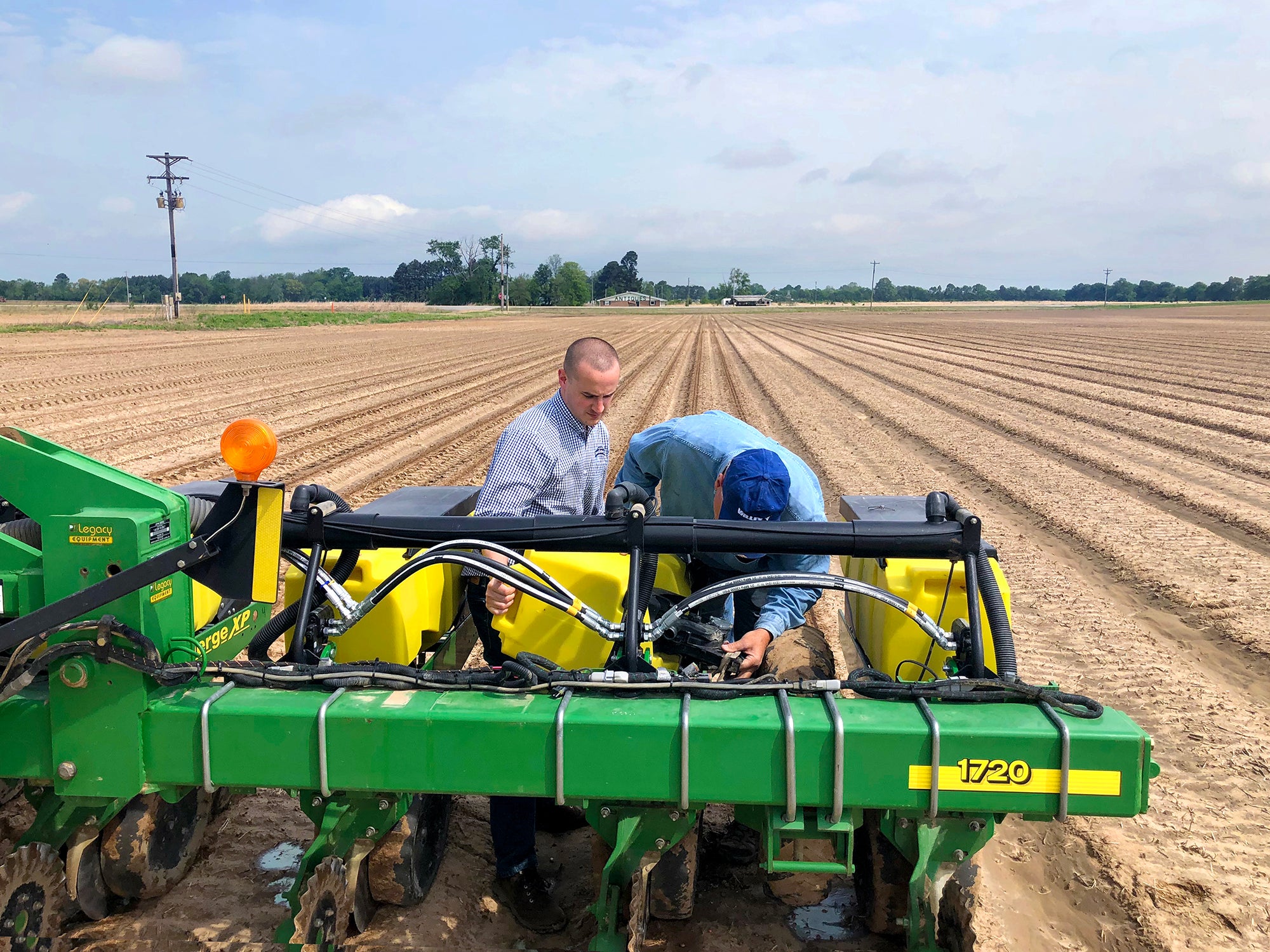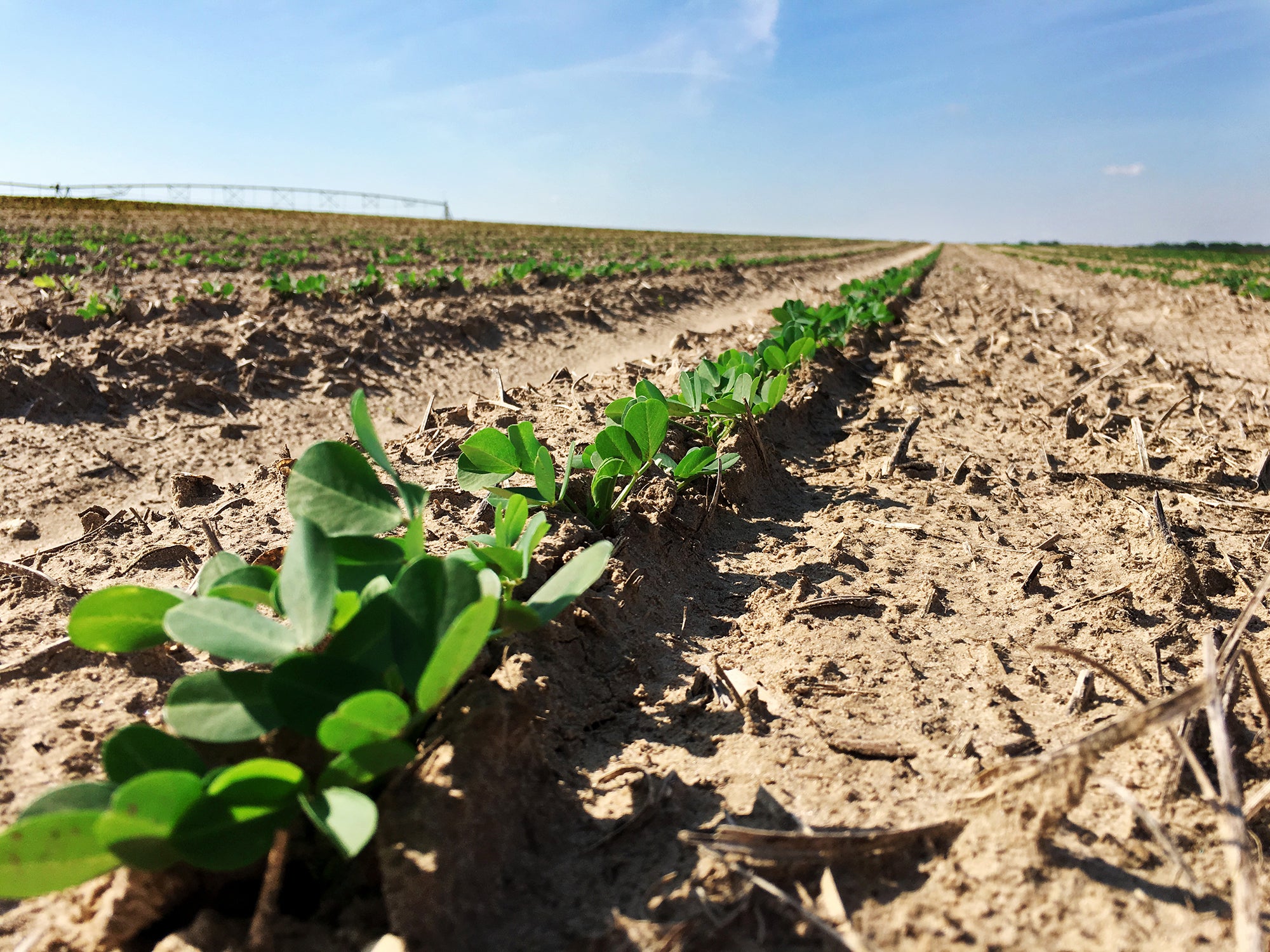Planting on the Peanut Butter & Co. Farm

A few weeks ago, Lee Zalben, CEO and founder of Peanut Butter & Co. and Eric Manenkoff, Director of Operations took a trip to the farm to participate in this season's peanut planting. We interviewed Lee, Eric, and our farmer Greg Baltz to learn more about the Peanut Butter & Co. Farm and the process of planting peanuts.

What was the motivation behind starting the Peanut Butter & Co. Farm?
Lee: As a company we’ve always aspired to offer the best tasting peanut butter made from simple, honest ingredients. I thought that taking responsibility for growing peanuts ourselves would help us become a better company by creating a way for us to get involved in growing the main ingredient in our products, the ingredient that contributes so much to the taste and experience that our customers and fans enjoy. We started Peanut Butter & Co. Farm in 2018 with the goal of one day being able to offer products made from peanuts we grow ourselves. Current industry practices around how peanuts get from field to market prevent that from being a possibility right now, but it is something we are working to change in the near future.
How are peanuts planted?
Greg: We start by preparing the land for planting which includes plowing narrow rows into the soil to plant the seeds, and then creating beds to support the rows and furrows for irrigation. We do this using a tractor with different attachments on the back of it. For peanuts we plant the seeds about 2” apart and 1” to 1 1/2” inches deep, or about 125,000 peanut seeds per acre. This year we are planting Georgia 09B High Oleic peanuts. Peanut plants emerge seven to fourteen days after planting depending on soil moisture and temperature.
Sustainability is very important to us on the Peanut Butter & Co. Farm. What type of equipment and technology do we utilize in order to ensure efficient peanut planting?
Greg: Every year we try out new things to improve our crop yield and reduce our impact on the environment. This year we are trying out a new system called Delta Force which uses a hydraulic cylinder on each row of the planting equipment that attaches to the back of the tractor. A sensor near the opening that actually deposits the seed into the soil measures how deep the planter is penetrating the ground. If the sensor encounters different soil conditions (firmer or less firm) which could affect the planting depth of the seed, a signal is sent to the controller and more or less hydraulic pressure is supplied to that row, ensuring the seeds are planted more uniformly, which can help increase our yields.
Between peanut crops, we plant what is known as a rotation crop. Can you explain what a rotation crop is and what purpose it serves?
Greg: Crop rotation plays a vital role in soil health, plant health, disease control, nutrient availability, and sustainability. Our light, sandy soil supports growing both corn and peanuts. Rotating corn and peanuts every other year works well because each crop supplies resources back to soil that the subsequent crop can take advantage of. Corn in the rotation with its large volume of plant material aids in enriching the soil organic matter.

What is the story behind choosing non-GMO corn as the rotation crop?
Lee: As new farmers, we have been focused on making incremental positive changes to the farm while we gain experience. GMO corn had been grown on our land in 2017 and in prior years. Almost all of our products are Non-GMO Project Verified and as a company we are committed to only using Non-GMO ingredients in our products, so we thought it only made sense that the corn we chose to grow as a rotation crop with our peanuts was non-GMO. So, this spring, we focused on the elimination of GMO corn (and any use of glyphosate aka Roundup) as a rotation crop on our land. Come harvest time, the non-GMO corn will be sold to a local poultry farm that specializes in raising non-GMO poultry.
We hope our actions will inspire other growers in the area to start planting more non-GMO corn as well!
What did you find to be the most interesting part of the planting process
Eric: I was really amazed by how much technology is involved. Inside the tractor there were multiple controls, computers, and software systems all working in conjunction to ensure the best possible peanut growth. The most surprising part of the process was how much time, effort, and planning goes into the planting season. Way before they are even ready to plant, the farmers are preparing the field, the equipment, and the seeds to be ready for the weather to plant a moment’s notice!
Did you learn something new from this experience?
Eric: I learned how important it is to time the planting season just right. You need the perfect combination of weather, moisture in the soil, and time of year in order to grow the perfect peanuts. Seeing firsthand all of the work that goes into growing peanuts really opened my eyes to the importance of planning and technology in farming.

Planting the peanuts is just the beginning! It takes around four to five months for peanut plants to fully mature, and the team will take a trip to the farm around October for the peanut harvest. For now, Greg will continue to send us updates from the farm, like the above photo of our peanut plants beginning to sprout up through the soul to soak in the Arkansas sunshine! Read more about the Peanut Butter & Co. farm here, and check back for more updates and news from the farm.

